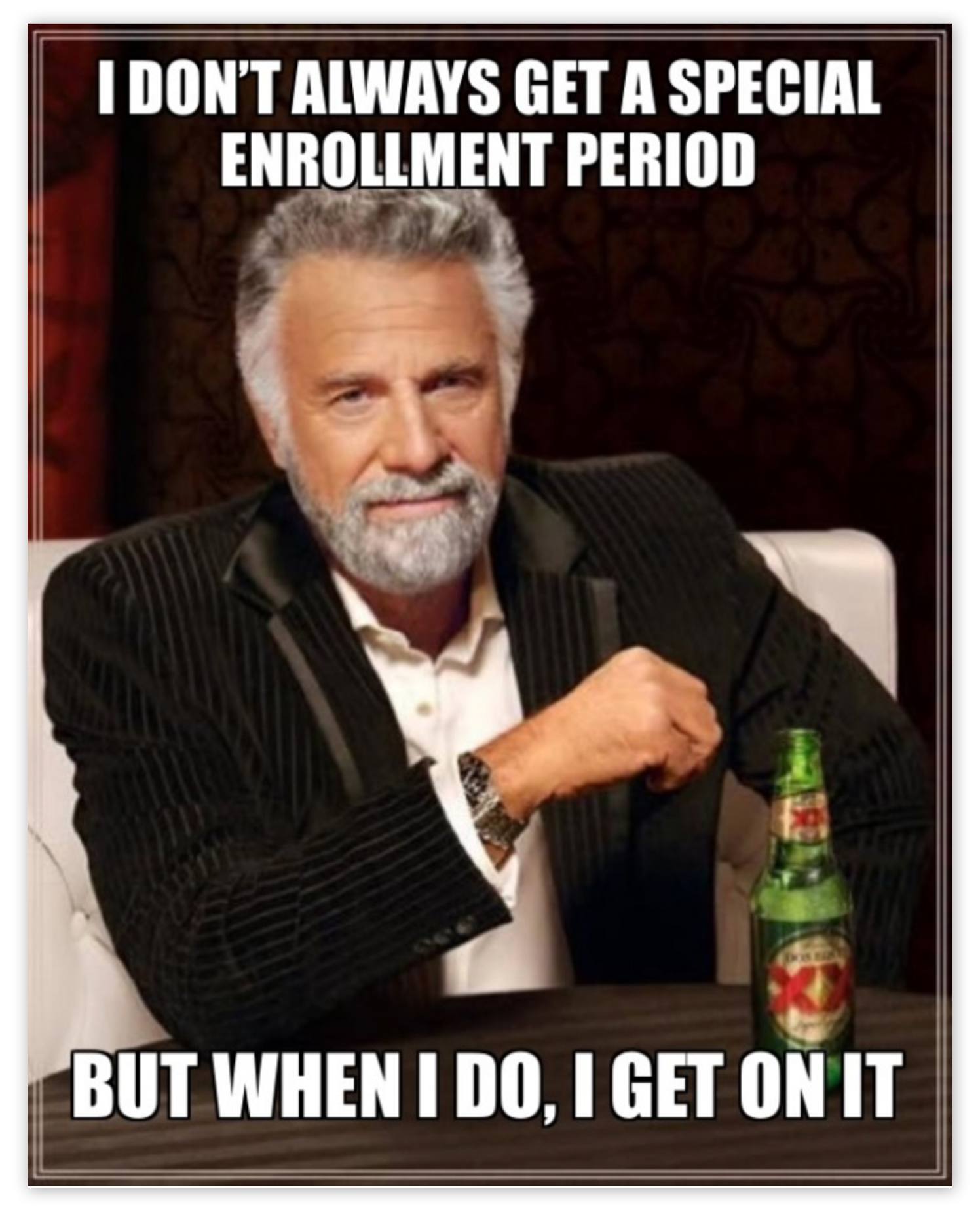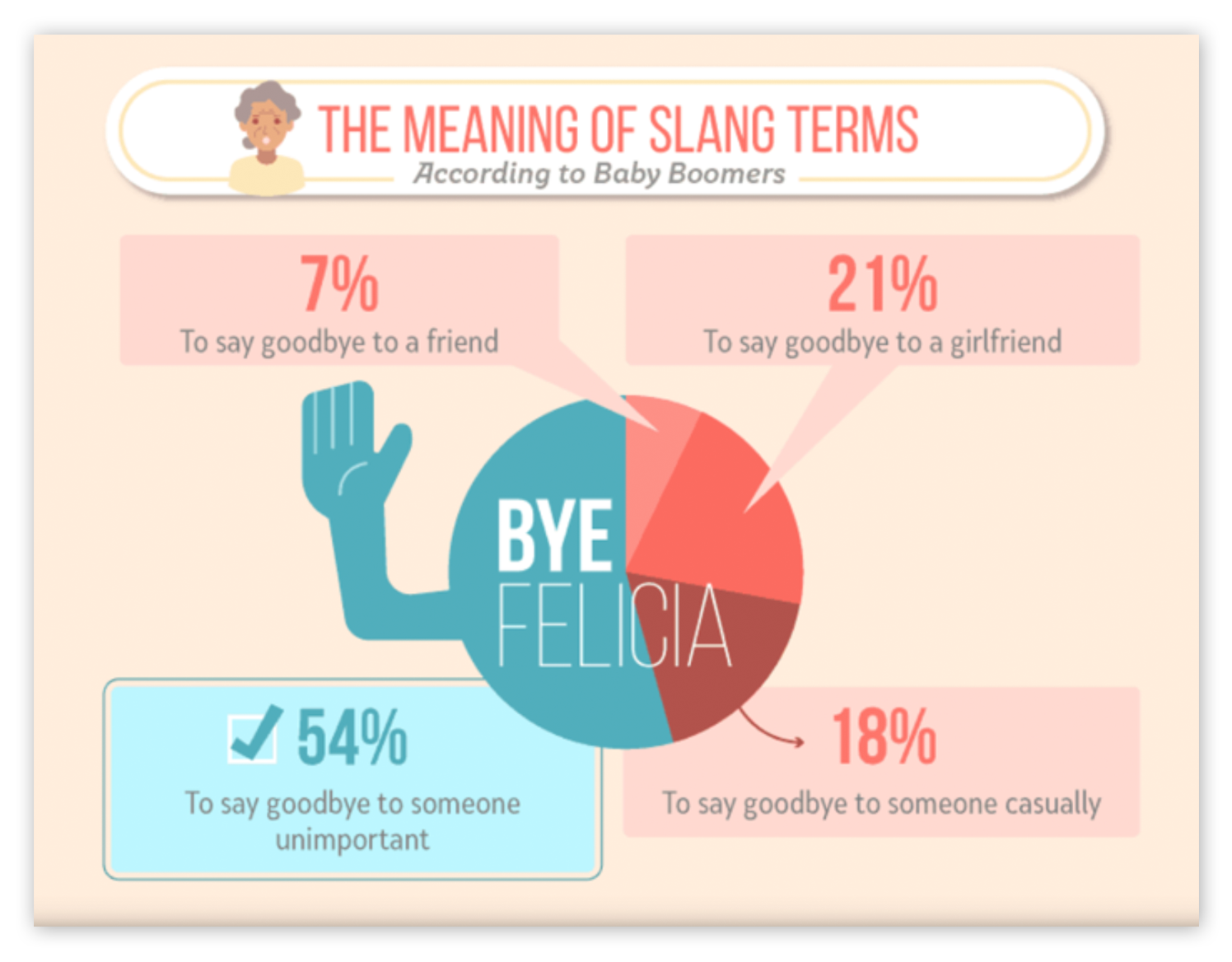What in the word? Making common usage work when marketing to seniors
Stephen Motter Boomer Marketing, Creative That Sells, Digital Direct Marketing, Medicare Marketing, Trends and POVWhen I started at DMW as a copy editor over a decade ago, the infancy of internet meme culture — those bite-sized, ubiquitous, impossible-to-ignore image/word reappropriations — was hitting hard. At the time I thought, “I don’t think our senior audience is ready for stuff like this yet, but when they are … that will be fun.”

DMW has never shied away from the power of memes. Here’s a top Facebook performer from a campaign we created for Delta Dental in 2017.
Our common usage is a living, breathing, work in progress. I’m fairly attuned to language trends, but recently on X (formerly Twitter), I noted the term “chomper” getting thrown around a lot. I came to understand that a chomper now refers to someone who talks too much at a concert. Really?
This discovery shook me enough to dig deeper into the breakneck pace of social media’s impact on language and how it’s reshaping marketing strategies across various demographics, perhaps most noticeably with seniors.

I would guess that most seniors are now familiar with “the most interesting man in the world.”
Defining common usage
Common usage refers to the way people communicate on a day-to-day basis, encompassing the words, phrases, and expressions that become widely accepted and adopted within a society.
With the rise of social media platforms like Facebook, X, Instagram, and TikTok, common usage has experienced a paradigm shift, influenced by the brevity and immediacy inherent in online communication. Common usage looks a lot different than it did a decade ago, and more and more seniors are faced with hard-hitting words and acronyms, figuring them out in step with the rest of us.
Language evolution in the age of character counts
Social media platforms have perpetuated new linguistic conventions, characterized by acronyms, emojis, and hashtags — all of which contribute to the concise and visually expressive nature of online communication. For example, “LOL” (laugh out loud), “BRB” (be right back), and 😂 (crying laughing emoji) are everywhere in digital conversations, transcending age groups and demographics.
X, whether we love it or hate it, continues to be a playground for those who enjoy the challenge of operating within strict character limits. Boiling a big idea down to 280 characters that are succinct and smart enough to garner a cherished retweet? What more could a writer ask for when they have a couple minutes to spare.
An entire ecosystem of tweeters feeding off each other’s tiny thought explosions has fostered something truly profound: a culture of word economy and ingenuity unlike anything we’ve ever known, and everyone online still feels its trickle-down effect.

More than half of baby boomers know that “Bye, Felicia” signifies the dismissal of someone unimportant.
Get the balance right for senior marketing
When it comes to marketing, understanding the linguistic preferences of your target audience is crucial. Seniors present a unique challenge and opportunity for marketers (DMW takes a deeper dive into exactly that in this blog post). While seniors are now active on social channels, and their language usage has adapted accordingly, don’t go crazy. You still need to avoid alienation.
1. “Senior” isn’t a necessary term anymore
You have options for how to refer to your audience, but keep it respectful and positive. “Older adults” is a good one, rather than stigmatizing terms like “elderly” or “old.”
2. Where (and why) do seniors go online
They go specific places for specific reasons. Facebook is a popular platform among seniors for staying in touch with friends and family. LinkedIn may be effective for reaching active seniors interested in professional networking. YouTube is widely used for educational content, tutorials, and entertainment. X could be useful for finding Gen Xers (yikes, that’s ME) and boomers in particular.
Generally, though, seniors expect the language they see online to be more relaxed, and perhaps not as formal, as what they might receive in the mail.
GOAT – greatest of all time
IRL – in real life
JIC – just in case
QT – cutie
RUOK – are you okay
POMS – parent over my shoulder (perhaps useful for chats with the grandkids)
And one that even I didn’t know (shame on me, I guess!):
WTPA – where’s the party at
3. Market with an omnichannel approach
Digital marketing and traditional marketing work, but they work best hand-in-hand. Older adults love to shop online, but they generally go to physical stores to complete their purchases. And while they value print ads, they’re also OK with print ads that contain online-only offers. Make it easy to take prospects from print to the web with a QR code, which seniors are familiar with (89% of those 50-plus have smartphones as of December 2023).
What all this means for common usage: Don’t stray from your core message, just vary your style across communication channels. Consider using more colloquial language online and more conventional language in print materials.
4. Avoid ageism
Brevity and slang aside, seniors value authenticity and genuine communication like anyone else. Marketing campaigns that convey trustworthiness and integrity are more likely to resonate. Just one trip-up with an insensitive term or turn of phrase can stop an older adult in their tracks. Take a look at some quick guidelines for age-inclusive communication.

An economy of words is the heart and soul of our recent award-winning campaign for MediGold. Read all about it.
Make every word count. Count on DMW to help.
We want you to successfully navigate the ever-changing language landscape for your next campaign with authentic, visually appealing, and easily digestible content that speaks directly to the hearts and minds of your audience. So, while this might be B4N, we’ll TTYL. Or … how about sooner? Contact us.